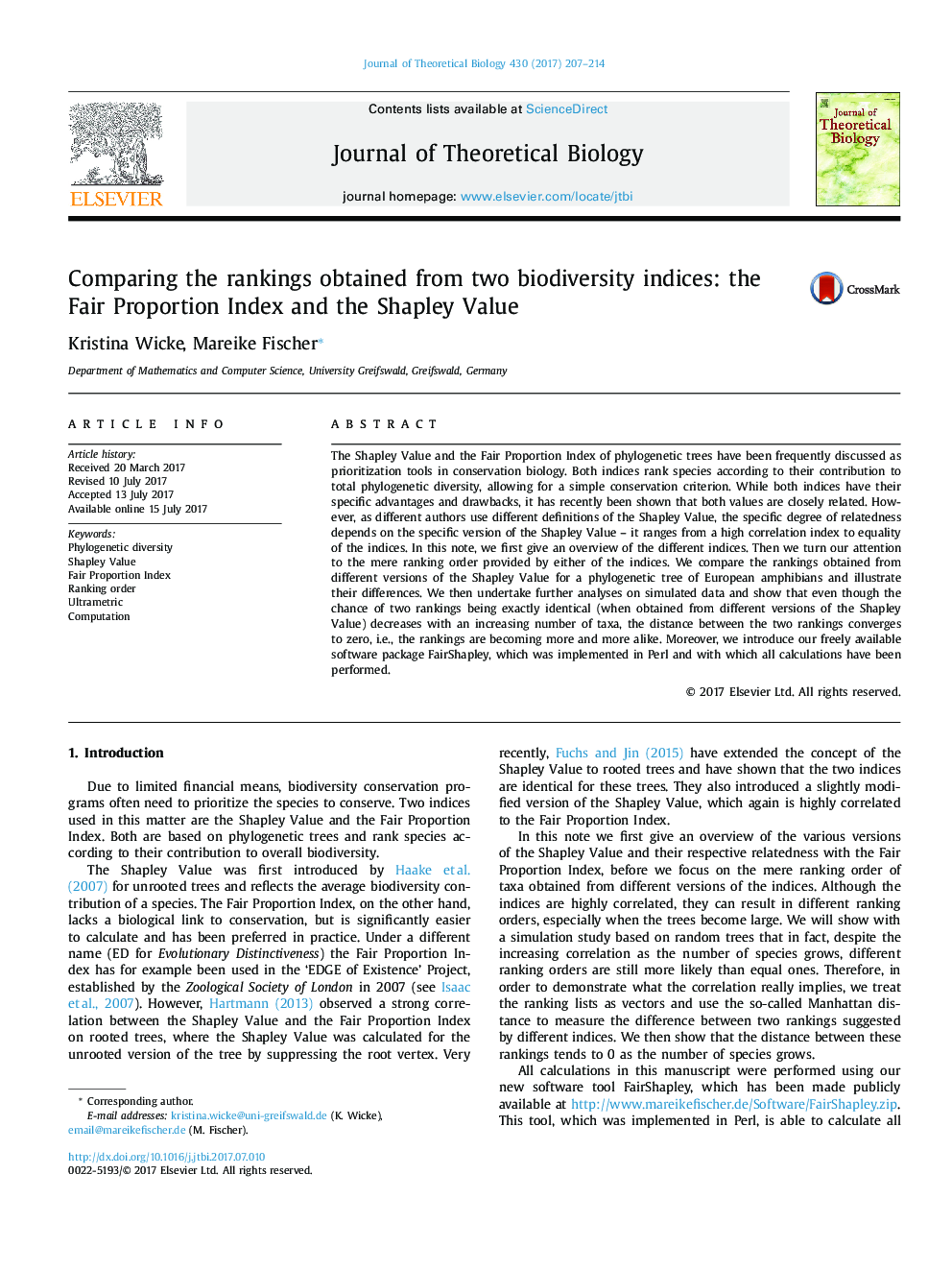| کد مقاله | کد نشریه | سال انتشار | مقاله انگلیسی | نسخه تمام متن |
|---|---|---|---|---|
| 5760333 | 1623780 | 2017 | 8 صفحه PDF | دانلود رایگان |
عنوان انگلیسی مقاله ISI
Comparing the rankings obtained from two biodiversity indices: the Fair Proportion Index and the Shapley Value
ترجمه فارسی عنوان
مقایسه رتبه بندی به دست آمده از دو شاخص تنوع زیستی: شاخص نسبت عادلانه و ارزش شپلی
دانلود مقاله + سفارش ترجمه
دانلود مقاله ISI انگلیسی
رایگان برای ایرانیان
کلمات کلیدی
موضوعات مرتبط
علوم زیستی و بیوفناوری
علوم کشاورزی و بیولوژیک
علوم کشاورزی و بیولوژیک (عمومی)
چکیده انگلیسی
The Shapley Value and the Fair Proportion Index of phylogenetic trees have been frequently discussed as prioritization tools in conservation biology. Both indices rank species according to their contribution to total phylogenetic diversity, allowing for a simple conservation criterion. While both indices have their specific advantages and drawbacks, it has recently been shown that both values are closely related. However, as different authors use different definitions of the Shapley Value, the specific degree of relatedness depends on the specific version of the Shapley Value - it ranges from a high correlation index to equality of the indices. In this note, we first give an overview of the different indices. Then we turn our attention to the mere ranking order provided by either of the indices. We compare the rankings obtained from different versions of the Shapley Value for a phylogenetic tree of European amphibians and illustrate their differences. We then undertake further analyses on simulated data and show that even though the chance of two rankings being exactly identical (when obtained from different versions of the Shapley Value) decreases with an increasing number of taxa, the distance between the two rankings converges to zero, i.e., the rankings are becoming more and more alike. Moreover, we introduce our freely available software package FairShapley, which was implemented in Perl and with which all calculations have been performed.
ناشر
Database: Elsevier - ScienceDirect (ساینس دایرکت)
Journal: Journal of Theoretical Biology - Volume 430, 7 October 2017, Pages 207-214
Journal: Journal of Theoretical Biology - Volume 430, 7 October 2017, Pages 207-214
نویسندگان
Kristina Wicke, Mareike Fischer,
